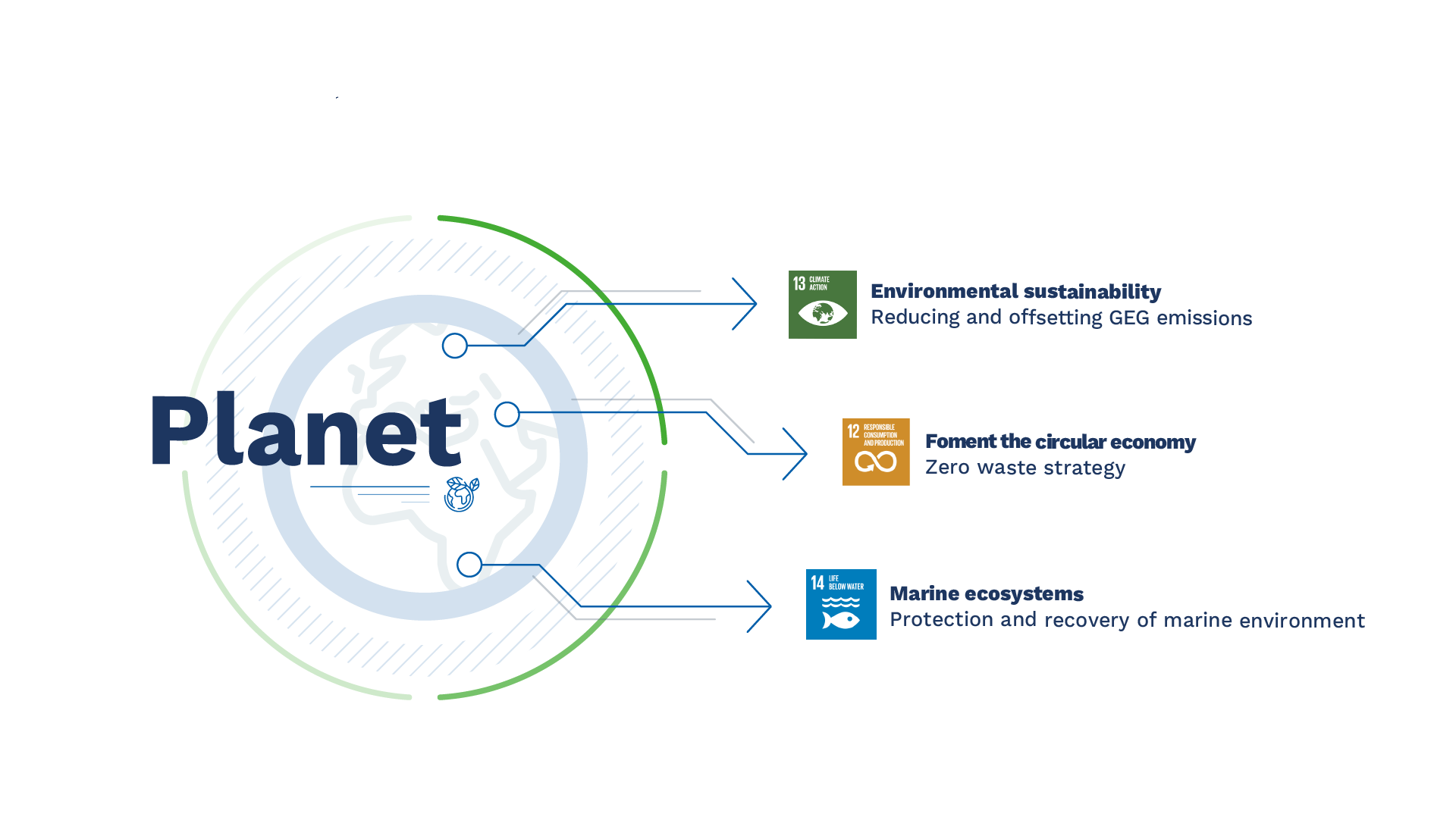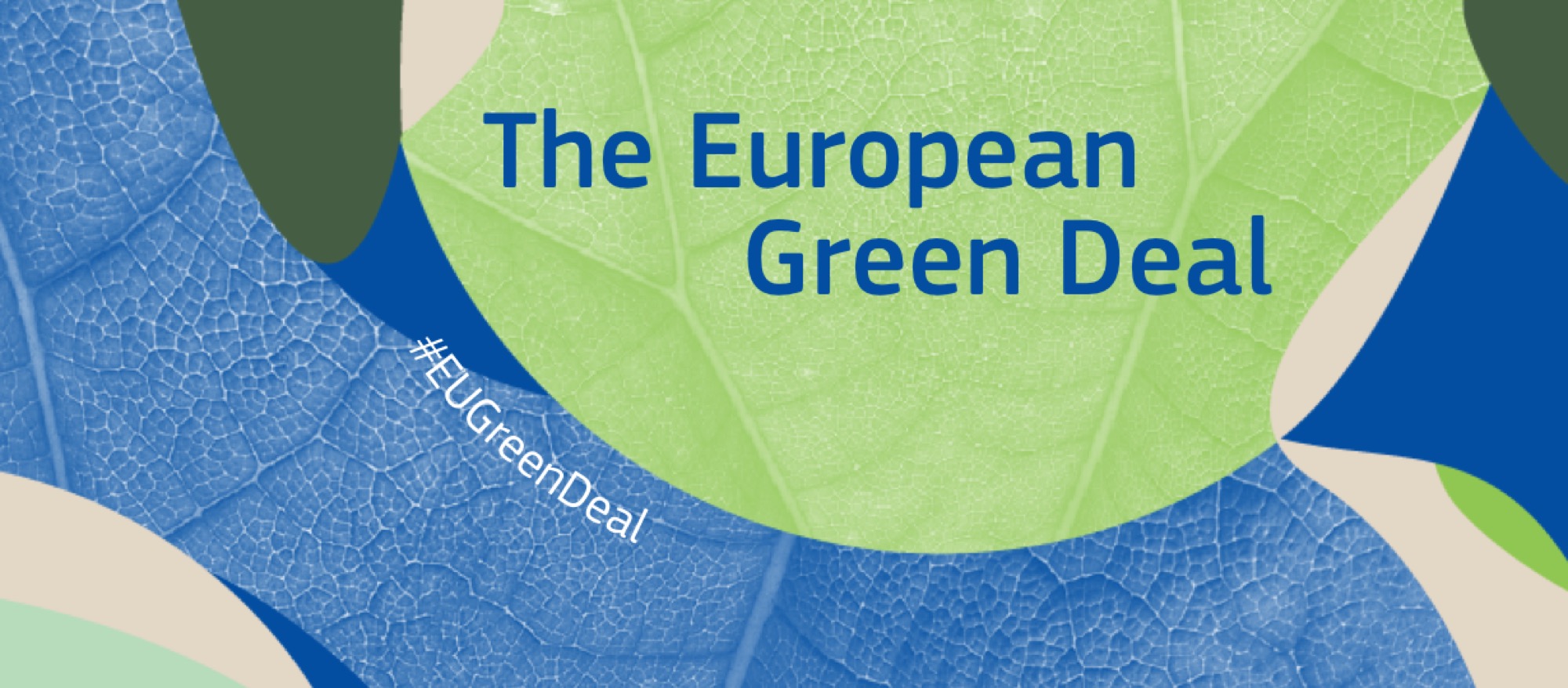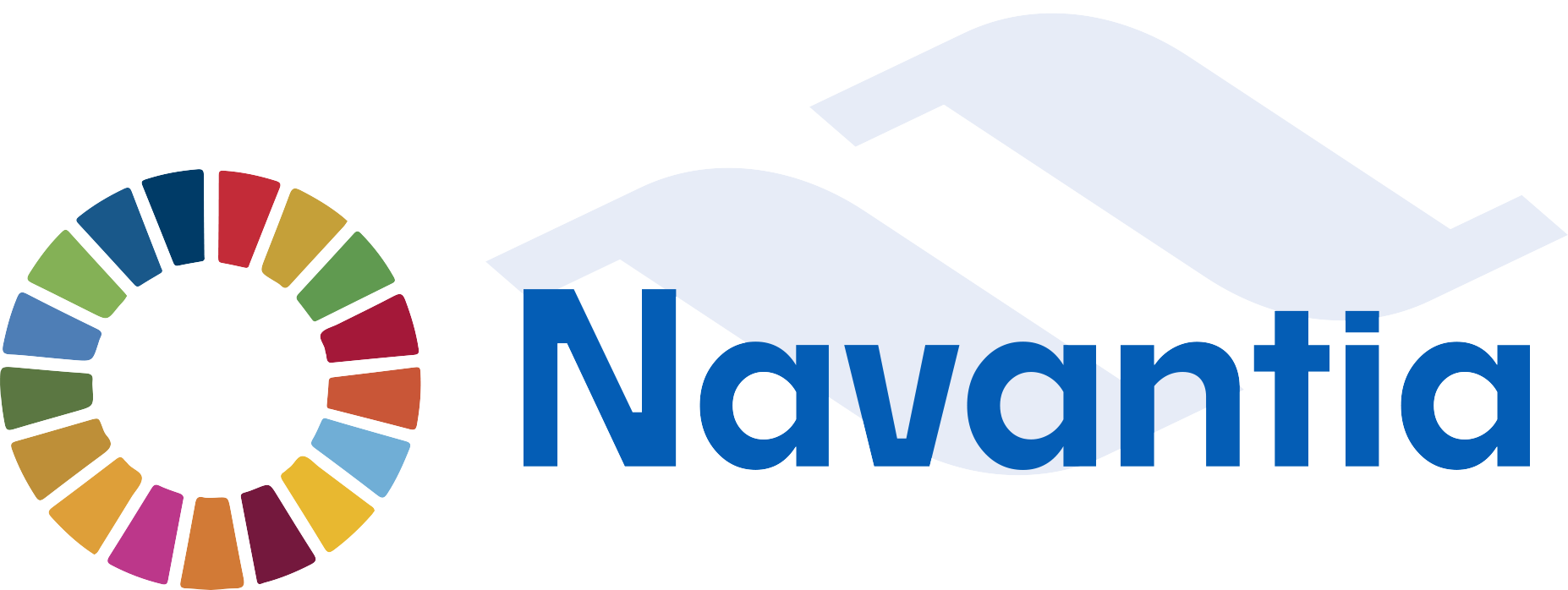
Navantia is aware of the growing social concerns about the environmental crisis. In this respect, we have identified existing environmental elements and their associated risks in order avoid and reducing the impact of our activities in the environment. We also have systems in place so that we can monitor and assess the degree of compliance.
At the same time, we are seeking to convert climate and environmental challenges into social and business opportunities: investment in clean technologies, support for industrial innovation, the decarbonisation of the economy and promoting circular economy… The ultimate goal: to achieve a just and inclusive transition for all.

Climate change



The EU is currently settling its “Green New Deal”, which aims to turn the EU into a CO2-neutral economy by 2050. In order to achieve this goal, intends providing of €100 billion between 2021 and 2027. Spain’s National Energy and Climate Plan (PNIEC) has also set out ambitious goals aiming at reducing of total gross greenhouse gas emissions by at least 90% by 2050. Its milestones for 2030 include 20% reduction in emissions and to generating 74% of energy using renewable sources.
Navantia has taken this plan as a reference model and we are committed to reducing our Carbon Footprint. We carry out this measurement on annual basis in line with standard ISO 14064:
Direct GHG emissions. For example: emissions from combustion in boilers, furnaces, vehicles, etc. which are owned or operated by the organisation.
Indirect GHG emissions associated with the generation of electricity purchased and consumed by the company.
Other indirect emissions, such as the extraction and production of materials acquired by the organisation or business trips.
In order to offset a proportion of the emissions resulting from our activity, Navantia undertakes CO2 absorption projects, runs carbon neutral events, sustainable mobility and energy efficiency initiatives, all through its annual investment plan, as well as procuring electricity with a renewable guarantee certificate.
The Government grants Navantia the carbon footprint register seal.
We check our carbon footprint
Navantia offsets the carbon footprint from business trips and events
Environmental training project
Environmental training project
Aims to provide staff with the necessary skills, competences and consciousness in environmental matters, especially those individuals whose work has the potential to cause significant environmental impact or affect the organisation’s ability to achieve its environmental commitments and meet its legal requirements. Aims to incorporate environmental criteria and clauses (emissions, waste, environmental management systems, etc.).
Green electricity
Green electricity
All the electricity consumed by Navantia in its operations comes from green sources, as certified by supplier that won the tender. This significantly reduces our carbon footprint.
Circular economy
The new economic model presented by the circular economy represents the first opportunity to bring about a change in the way we produce and consume since the industrial revolution. It looks to separate economic growth from the consumption of resources and environmental impact, ensuring a prosperous society.
Navantia endorses projects related to the circular economy – we’re conscious of our importance as a crucial player in the transformation towards a more innovative, competitive and responsible development and growth model. A model that allows us to maximise available resources so they remain in the production cycle for longer periods of time, reducing waste and taking advantage of any waste products that cannot not be avoided.
Navantia undertakes to adopt a zero waste strategy. This does not imply zero waste generation but rather organised management which seeks to reduce waste, prepare it for reuse and/or transform the waste into raw materials, reintroducing them into the value chain.
Cleaner products
We are committed to designing cleaner ships that exceed compliance with international standards (MARPOL and others). As such, we foster innovation aimed at making sure our products and services are designed in an energy-efficient manner. We develop the design of fairings which reduce resistance and therefore fuel consumption in high-speed environments; ships’ propulsion plants adapted to mission profiles, using hybrid solutions; energy recovery and storage systems and the use of alternative fuels for lower emissions, such as liquefied natural gas or biofuels, among others.
This commitment extends beyond design and into the construction phase, by way of a conscious choice of materials in order to facilitate safe, environmentally rational recycling in accordance with the international convention for the recycling of ships (Hong Kong Convention).
Navantia is also developing energy efficiency models of its ships which will enable navigation to be simulated under different conditions. This will allow the company to provide a service to its clients by which they’ll be able to select the most sustainable navigation type for the route (speed, draught or trim conditions) in advance, in order to guarantee the lowest possible fuel consumption and reduce pollutant emissions through the exhaust system.
Marine ecosystems
We live on a blue planet, with oceans and seas covering more than 70% of the planet’s surface.
They serve as the foundation for much of the global economy, supporting industries such as tourism, fisheries and international maritime transport which employ millions of people.
Alongside marine ecosystems, coastal ecosystems include coral reefs, mangroves, marshes, sea-grass beds, wetlands and other elements that protect from coastal erosion and harbour vast biodiversity.
Spain has nearly 8,000 kilometres of coastline, where millions of people live and depend on healthy seas and coastal areas.
Navantia aims to protect marine and coastal ecosystems by fostering scientific research in the field of marine technology. We are therefore involved in future working groups to identify new technologies for the monitoring and surveillance of Natura 2000 sites at sea.
Furthermore, we are using the company’s products and services to promote the sustainable management of our seas and oceans.




